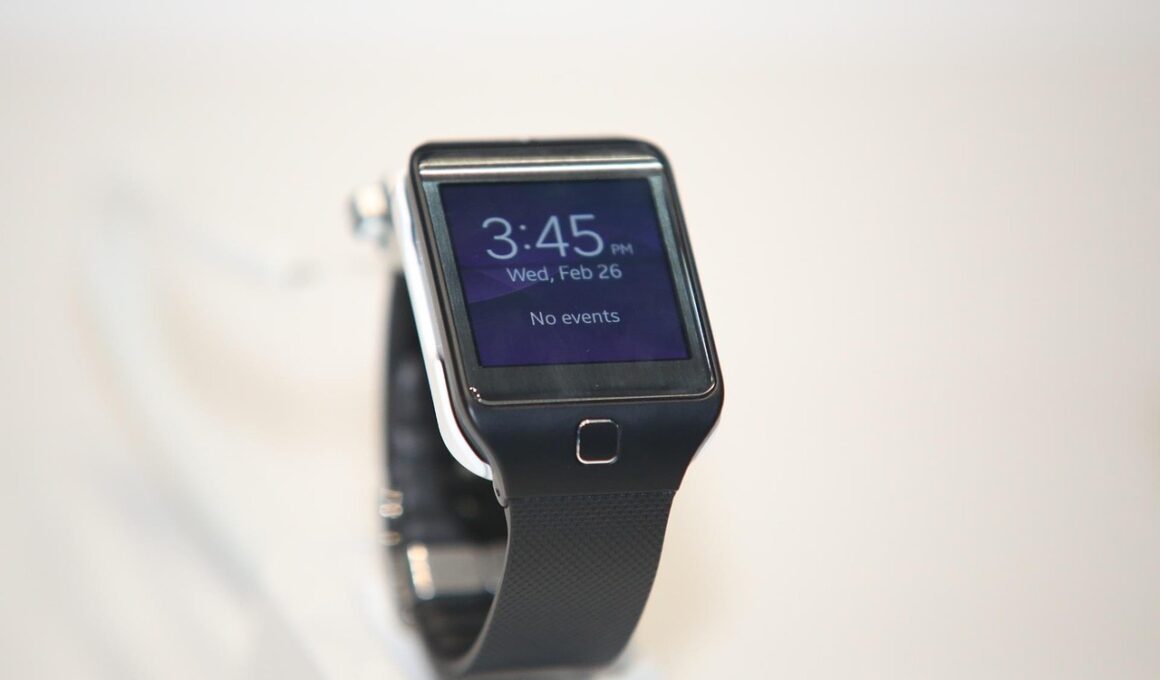The Benefits of Fitness Wearables for Patients with PTSD
Fitness wearables have emerged as innovative tools that assist individuals battling PTSD. These devices track physical activity, monitor sleep patterns, and provide valuable insights into one’s overall health. By leveraging technology, wearables support users in customizing their fitness routines and identifying which activities help alleviate PTSD symptoms. Through regular exercise, individuals can improve their mood, decrease anxiety levels, and enhance their emotional well-being. Moreover, wearables also help remind users to stay active, which is crucial for maintaining consistency in their fitness journey. Studies indicate that engaging in regular physical activity significantly benefits mental health, particularly for those dealing with trauma-related disorders. Wearables can contribute by motivating users to fulfill daily goals and encouraging movement throughout the day. In addition, real-time data provides insights into the correlation between physical activity and mood levels, enabling individuals to make informed decisions about their wellness. Ultimately, wearable technology not only holds great potential for physical fitness but also serves as an adjunct tool towards mental health maintenance. By intertwining fitness with technology, wearables represent a progressive step in addressing the needs of individuals with PTSD.
Impact on Sleep Quality
One notable advantage of fitness wearables is their ability to monitor sleep quality, which is often compromised in PTSD patients. Many wearables utilize advanced sensors to track sleep patterns, including duration and sleep stages, allowing users to identify potential disruptions affecting their rest. Quality sleep is pivotal for recovery, as it not only promotes physical health but also stabilizes emotional well-being. With a better understanding of their sleep metrics, users can adjust their nightly habits to enhance overall sleep quality. Many wearables also provide insights and recommendations based on collected data, helping patients establish healthier routines. Furthermore, individuals with PTSD often experience nightmares or sleep disturbances, making it essential to address these issues proactively. By integrating relaxation techniques or evening exercise into their schedules, users can leverage wearables to create a conducive environment for restful sleep. The feedback generated by these devices can empower patients, instilling a sense of control over their health. Overall, wearables serve as significant allies in managing sleep, which is a critical component of the mental health recovery process.
Wearables facilitate community engagement among individuals with PTSD. Many modern devices have social features that encourage communication and interaction with others who share similar experiences. This sense of belonging can combat feelings of isolation that often accompany PTSD. By participating in fitness challenges or sharing achievements, users can find encouragement in communal support. These features foster motivation, as individuals hold each other accountable in achieving fitness goals. Additionally, wearables offer the possibility of connecting with mental health professionals, providing crucial access to resources and guidance. Some wearables even include built-in features that offer mindfulness exercises and mental health resources, promoting emotional balance. Engage with an online community by joining forums or apps associated with wearables, where users can share strategies and successes. Creating social connections in a supportive environment allows individuals to express themselves openly and share coping mechanisms. Through collective goals and shared experiences, patients can find healing in the understanding and encouragement from their peers. Ultimately, wearables serve to bridge the gap between fitness, technology, and community support, enriching the lives of individuals dealing with PTSD.
Personalized Fitness Plans
Another benefit of wearing fitness devices is their capacity to aid in developing personalized fitness plans. Each individual approaches fitness differently, therefore customization is essential for achieving optimal results. Wearables allow users to input specific metrics and objectives, facilitating tailored workout regimens. Users can set personal goals based on their current fitness levels while taking into account their PTSD symptoms. Incorporating exercises that particularly resonate with patients can foster confidence and enjoyment in workout routines. Additionally, the ability to track progress over time can motivate patients to stick to their plans. Wearables will record workout history, caloric expenditure, and physical capabilities, creating a comprehensive overview of development. As patients witness improvements in their overall health and fitness, their psychological resilience and self-esteem may also rise. Care should also be taken to ensure that fitness plans remain adaptable to the patient’s evolving mental health needs. With each milestone achieved, individuals can feel a sense of accomplishment while also recognizing their strength in navigating PTSD. In finding the right balance, wearables help patients cultivate healthier lifestyles focused on sustainable fitness and mental wellness.
The impact of fitness wearables on patients with PTSD goes beyond physical tracking; they incorporate wellness techniques essential for mental health management. Many devices provide built-in alerts for mindful breathing, meditation, and hydration reminders that promote emotional equilibrium. Consequently, these features encourage individuals to become more in tune with their minds and bodies. Establishing such routines can become increasingly vital for those grappling with PTSD. Personalizing these experiences creates a holistic approach to health, ensuring that users focus not only on physical activities but also on mental care. Data-driven insights can highlight correlations between mental states and daily habits, empowering users to make informed choices about their well-being. For example, by tracking stress levels after certain physical activities, users may discover what works best for them. Additionally, recommendation systems based on user behavior may suggest new exercises or techniques that promote emotional relief. By providing ongoing support, awareness, and adaptability, wearables represent a significant advancement in caring for mental health. Such comprehensive health management is essential to the recovery journey and underscores the importance of integrating technology into personal wellness plans.
Encouraging a Supportive Environment
Fitness wearables also play a critical role in encouraging a supportive and understanding atmosphere for individuals struggling with PTSD. When patients embark on their fitness journeys, they often face challenges that may dissuade them from maintaining momentum. By utilizing wearables, users have essential data and milestones that establish accountability and progress, fostering a sense of achievement. This sense of accomplishment can lead them to be more open about their experiences with friends and family, allowing for a greater communal understanding of their struggles. Moreover, this openness can pave the way for supportive friends and family members to assist in their fitness journey, whether through encouragement, companionship, or participation in exercises. Those close to PTSD patients can utilize wearables to better understand their loved one’s needs and support mechanisms. Thus, wearables not only enhance individual experiences but also promote a more compassionate approach within the community. Overall, by integrating supportive features and fostering responsible dialogue, fitness wearables contribute positively to the atmosphere surrounding mental health challenges while emphasizing collective growth.
In conclusion, fitness wearables provide invaluable support for patients navigating the complex landscape of PTSD. They offer an innovative solution for improving physical activity levels, monitoring sleep quality, and enhancing mental health engagement. Through personalized fitness plans, social interaction, and mindfulness features, wearables serve as powerful allies in recovery. Individuals suffering from PTSD can harness the benefits of technology in addressing their struggles effectively. Such devices empower users to take charge of their physical and emotional well-being, paving the way for recovery. By highlighting progress and developing a connection with their own health, individuals can attain a more profound sense of control over their lives. Coupled with community engagement and support, wearables ensure that patients do not feel alone in their endeavors. As research continues to shed light on their efficacy, it is clear that technology can play a significant role in alleviating symptoms of PTSD. Embracing fitness wearables within mental health strategies holds tremendous potential, offering a guiding light on the path to recovery. The future of mental wellness might very well be intertwined with innovative technological solutions aiming to enhance the quality of life for many.


